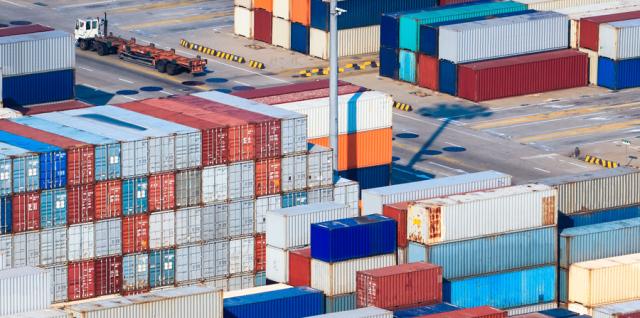So, what’s this trade blog all about? This is the first in what will be a regular blog covering all things related to sheep and beef trade from the New Zealand perspective. We are hoping to give you an overview of work that the Trade Policy Team here at B+LNZ does to support New Zealand’s sheep and beef industry. We will also be updating you on any big trade policy happenings around the world that may impact New Zealand’s red meat exports.

NZ trade background
New Zealand has long been a trading nation, from Māori trading with early whalers and settlers through to gold, wool and the beginnings of our red meat trade today with the first export of frozen mutton from Dunedin to London in 1882.
Red meat trade has changed beyond recognition since then – now reaching over 120 countries around the world, and with a wide range of innovative and high-value products on offer. Unfortunately, however, the sector also faces a raft of barriers that reduce, restrict and distort trade, including tariffs (that is, effectively a ‘tax’ on our products as they go into the different markets), tariff rate quotas (a fixed volume of product that enters at a special tariff rate, sometimes zero), non-tariff barriers (red tape and various technical requirements) and production subsidies that tilt the playing field in favour of our competitors.
Tell me more about these trade barriers!
We currently estimate the red meat sector pays around $250 million in tariffs each year, on total exports worth around $9.3 billion. But we also save over $350 million a year in tariffs we don’t have to pay thanks to New Zealand’s free trade agreements (FTAs). Increasingly open markets thanks to liberalisation resulting from World Trade Organisation (WTO) negotiations demonstrates the value in ongoing support for trade liberalisation by the red meat sector. B+LNZ, alongside the Meat Industry Association (MIA), plays an important role in supporting our government negotiators in opening up markets through FTAs, by sharing data and analysis and championing good market access outcomes for our products.
As tariff rates have come down, non-tariff barriers have become a more significant issue. By one estimate made in 2016, non-tariff measures cost the beef sector over NZD$1 billion in the Asia Pacific region alone. Not all of these measures are barriers as such – but in some cases, we face requirements that are not based in science or international norms, such as administrative or labelling requirements – that add significant cost and may make imported goods less attractive to consumers than domestic products.
While we continue to send our products to customers in traditional markets such as the European Union, the United Kingdom, the United States and Japan, we are constantly looking out for new opportunities for New Zealand sheepmeat and beef. The best recent example of this is China. Before the New Zealand China FTA was signed in 2008, red meat trade with China was worth $469 million per year. Exports have rapidly expanded since to $3.84 billion for the year ending July 2020, with China our most important market for both sheepmeat and beef.
What else is affecting sheep and beef trade?
Looking to the future, there are both challenges and opportunities for New Zealand’s red meat exports. On one hand, COVID-19 has had an impact on export markets, with social distancing and lockdowns impacting an important customer base for us in the restaurant industry across the world, and longer-term forecasts of economic contraction also likely to dent demand and prices. In turn, we have seen increased protectionism and subsidies as countries seek to protect their own farmers. The international rules-based trading system that New Zealand has relied upon to protect us from unjust tariffs and rules, and to set a stable base for exporters, is under threat from a rise in ‘economic nationalism’ in some countries.
That all sounds a bit grim, is there any hope?
There are still plenty of exciting opportunities for the sector, though. The Food and Agriculture Organisation predicts that global demand for red meat will rise faster than supply as the world population increases, meaning prices in the long term are likely to recover from the COVID shock, stabilise and rise. We are fortunate that many of the countries in our backyard, including China as well as other Asian nations such as Vietnam, Thailand, Indonesia and India, will see an expanding middle class of discerning consumers, eager for high-quality red meat and other products. Africa is a continent that is projected to follow a similar path as it matures, modernises and grows.
COVID has taught the world the importance of having a secure supply of safe, high quality food, with countries such as Singapore and China managing this through high quality FTAs with countries like New Zealand. In many countries, consumers are focusing on issues around sustainability and animal welfare – with New Zealand well positioned to supply those consumers, given the focus of our farmers on raising animals humanely while also preserving biodiversity, reducing carbon emissions, and protecting the water, soil and air – a message that is underscored by our “Taste Pure Nature” campaign.
And of course, B+LNZ is continuing to support the government’s efforts to broaden our portfolio of FTAs – with both the European Union and United Kingdom currently on the negotiating agenda, and the final polish being given to a large multi-country deal among Asian trade partners including South-East Asian countries, Korea and Japan, as well as Australia and New Zealand, the ‘Regional Comprehensive Economic Partnership Agreement’.
While this is just a quick introduction to some complex issues and by no means exhaustive, we hope you will join us on this blog as we explore these topics in more depth.
See you next time,
The Trade Policy Team.